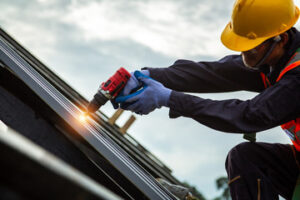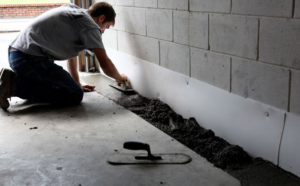Life Insurance Greenville SC provides peace of mind while you’re living, and protection for your family after you die. It can help pay for final expenses, repay debts and leave a legacy for loved ones. It’s important to review your policy regularly. Changes like births, divorce and remarriage should be noted on your policy.
Benefits

Life insurance provides peace of mind for you and your family. In addition to paying funeral expenses, it can also help you cover other financial obligations, such as debt, mortgage payments, and education costs for children. You can even use it to provide income replacement for your family after your death. Depending on your needs, there are several different types of life insurance policies to choose from. Some types of life insurance are permanent, while others can be changed or cancelled at any time. A financial professional can help you find a policy that fits your needs and budget.
A major benefit of life insurance is that it pays a lump sum, or death benefit, to your beneficiaries upon your death. The benefit can be used to pay your debts, cover expenses, or even supplement your income. This is especially important for families who rely on one person’s income. Some people also choose to use their death benefits to leave a legacy for loved ones or favorite charities.
Some types of life insurance, such as whole and universal life policies, offer cash value that accumulates over time. You can access this money through policy loans and withdrawals, but remember that it will affect your future death benefit. A common rule of thumb is that your death benefit should be worth 10 times your current income.
If you want to keep your life insurance policy, make sure you pay your premiums on time. If you miss a payment, your life insurance policy will lapse. To reinstate your policy, you will need to pay the overdue premium plus interest. You may also be required to undergo a medical exam and fill out new health questionnaires.
Coverage options
Life insurance is a smart purchase to help ease the burden on loved ones after you die. However, each policy is unique and should be carefully evaluated to ensure it meets your needs and budget. It’s also important to select a company with a strong track record and financial stability.
There are a few different types of coverage available, including term and whole life policies. Term policies offer protection for a set period of time, such as 10, 20 or 30 years. They are often used to cover debt or mortgages, but they can be purchased for other purposes as well. Term life insurance is generally less expensive than permanent coverage.
Unlike term, whole life insurance lasts for your entire life as long as you pay premiums. It typically builds cash value, which you can borrow against or withdraw at some point in the future. It’s more expensive than term life, but it offers peace of mind that your family will be taken care of after you die.
Some insurers offer specialized policies for specific needs. For example, seniors can purchase final expense insurance, which covers funeral costs and other end-of-life expenses. These policies are usually sold via simplified underwriting, a process that doesn’t require a medical exam or health questions. However, they are usually limited in coverage and may have graded death benefits.
Other options include a whole life insurance with a flexible death benefit, which allows you to change the amount of the death benefit over time. You can also buy a universal life insurance with an adjustable interest rate. These policies are best for individuals who want to customize their life insurance policy, but don’t want to commit to a fixed monthly premium.
Costs
Many factors affect the cost of life insurance. Some of the most important ones include age, gender, health, and the type and length of coverage. In addition, there are several add-on options that can also increase the price. A financial professional can help you determine the appropriate amount of coverage and the best policy for your budget.
Generally, younger people pay less for life insurance because their life expectancy is lower. However, rates for older people may rise as a result of health issues or increased mortality risk. In addition, women typically pay lower rates than men of the same age because they live longer.
There are many reasons to purchase life insurance, but one of the most common is to cover funeral and burial costs. Another is to replace a significant portion of income in the event of death, which can help family members maintain their standard of living. It is also often used to pay off debt, like a mortgage or car loan, and to pay for children’s education.
Some people purchase life insurance to protect against the loss of a business partner or spouse. This can be helpful in the event of a divorce or a sudden illness that prevents the spouse from working. It can also be used to fund a buy-sell agreement between partners. Others choose life insurance to provide an inheritance for their children. In addition, some people use it to create a safety net for their family in case of a disability or an accident. It can even help to offset lost income for a short time, such as in the event of a critical illness. Regardless of the reason, life insurance is a good investment.
Taxes
In most cases, the beneficiaries of a life insurance policy don’t have to pay taxes on the base death benefit. However, any interest earned on those proceeds is taxable. This can be a problem for beneficiaries who receive large death benefits, especially if they are the primary beneficiary. These beneficiaries should make sure they keep their beneficiary designations up-to-date to avoid unexpected tax consequences. In addition, beneficiaries should be aware that the value of a life insurance death benefit includes any interest earned by the policy between the date of death and the time it’s paid to the beneficiary.
When you buy whole life insurance, part of your premium goes to a cash value account. This account increases over the years and is usually tax-deferred as long as the policy remains in force. However, if you withdraw more than your cumulative premium payments, the IRS may classify your life insurance as a modified endowment contract (MEC). If this happens, you’ll have to pay income taxes on the excess amount.
Some life insurance policies allow you to take out a loan against the cash value, which is also tax-deferred. You can borrow up to your policy’s cash value, but the excess must be repaid. Otherwise, the outstanding loan will be taxable as income. If you want to sell your life insurance policy, the amount you receive above your policy’s basis is taxable as income. You can also exchange your policy for another one without paying any taxes, as long as you use the proceeds to buy a similar product.
If you exchange your life insurance for a different type of life insurance, it’s important to consult a tax advisor. You may need to report a “Reportable Policy Sale” if the exchange is for cash or other valuable consideration.
Cash value
The cash value of life insurance is an investment component of permanent life insurance policies (including whole life, variable life, and universal life), as opposed to term insurance, which doesn’t build cash value. This money is invested inside the policy and earns a money market rate of interest. The amount of money that you can withdraw from the account varies by policy. You can use the money to pay your premium, or you can take a loan against it. If you choose to do this, be aware that it will reduce the death benefit.
The money in a cash-value policy is usually tax-deferred, meaning that the investment earnings aren’t taxed until you withdraw them. This feature is a major selling point for life insurance, although everyone’s tax situation is different, so be sure to talk to your financial advisor and/or tax attorney about the specifics of your case.
When you die, the cash value in your policy will be paid to your beneficiaries tax-free. You can also use the money to increase your death benefit on some policies. However, it takes a while for the cash value to accumulate to a level that’s worth using. And if you do decide to withdraw the money, remember that it will be taxed at a higher rate than regular savings.
You can access the funds in your cash-value policy by borrowing against them. If you don’t pay back the loan, your beneficiary’s death benefit will decrease. Some companies charge a surrender fee for withdrawals. And if you make too many withdrawals, your death benefit may be diminished. If you don’t need access to the money in your life insurance policy, it’s probably a better idea to put that money into other savings vehicles.

